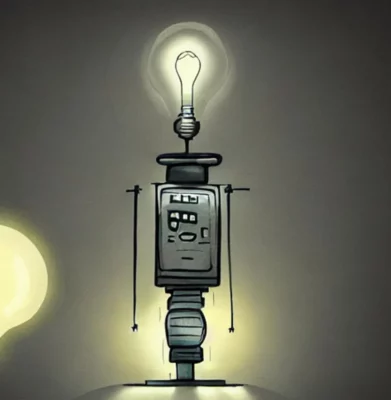
There is a general scientific consensus that artificial intelligence (AI) has made significant strides in playing poker at a high level. The development of AI algorithms has enabled machines to leverage game theory and other mathematical principles to optimize their play and achieve impressive results.
Notably, the advent of GTO strategies has enabled AI systems to perform extremely well in certain types of poker games, such as heads-up limit hold’em. However, it should be acknowledged that there is still ongoing research in this field, and the question of how effectively poker can be played by AI is not yet fully resolved.
This raises the question of whether humans should also play according to GTO and what exactly the term means. This article will shine a light on the term GTO and how GTO strategies are used in poker.
What does GTO mean?
Firstly, GTO stands for Game Theory Optimal, which refers to a strategy that is optimal according to game theory. The underlying idea is simple: there are various strategies in poker, and it can be mathematically proven that there is a strategy that is long-term unbeatable, regardless of how the opponents play.
Although there is certainly an unbeatable strategy for every poker variant, we have yet to discover such a perfect strategy for complex games like Full Ring No-Limit Hold’em or Omaha. Nonetheless, we know that a GTO strategy exists.
For simple poker variants, we have already come very close to approximating this perfect strategy. The Libratus poker bot for example is capable of playing Heads-Up No Limit Hold’em in a way that is effectively game-theoretically optimal. This was demonstrated when the bot beat 4 professional poker players over a 20 days period back in 2017.
However, we are still a bit away from developing GTO strategies for more complex poker variants. Furthermore, it is extremely difficult to articulate how such complex strategies work. For instance, the Cepheus bot strategy which solved Heads-Up Limit Hold’em is a 12-terabyte compressed database containing instructions for every possible game situation.
Nonetheless, there are countless individual situations in poker where professionals speak of GTO game styles and strategies, such as in tournaments with high blind levels, bluffs on the river, ranges, range merging, and similar specialties.
GTO in Simple Games

To understand how GTO strategies work, it is worth considering a much simpler game than poker, such as rock-paper-scissors.
In this game, there is a simple and unbeatable GTO strategy: one should play rock, paper, and scissors each a third of the time, selecting each option randomly.
Such a strategy cannot be beaten in the long run, regardless of how the opponent plays. However, this strategy only ensures that in the long run, you do not lose, rather than guaranteeing victory.
GTO in Poker
When it comes to poker, GTO strategies are only relevant in specific, individual situations. For instance, these strategies may advise players to “raise with 35.3% of your hands” in a particular situation.
Pure push-fold situations with two players can be resolved using GTO strategies. See our Equilibrium Push and Call Strategy.
An example of such a strategy is to go all-in with 9♣5♣ from the small blind up to a stack of 8 big blinds. Conversely, the big blind should call an all-in with the same hand if their stack is less than 4.9 big blinds.
If you play according to these strategies, which in this specific case are simply push-fold tables, you ensure that the opponent cannot win against you in the long run.
Exploiting vs. Game Theory Optimal Play

Playing a GTO strategy ensures you do not lose in the long run. However, this does not mean that a GTO strategy is always the best strategy. In fact, adapting your strategy to exploit the opponent is often more effective than simply relying on GTO principles.
Consider rock-paper-scissors again, but with a specific opponent who always plays either rock or scissors, never paper, and selects each option randomly. The GTO strategy of selecting each option randomly one-third of the time wins every third game on average, ties every third game, and loses every third game.
However, a strategy of always playing rock would win every other game when the opponent plays scissors, and tie otherwise. This strategy adapts to the opponent, exploits him, and outperforms the GTO strategy in this specific situation.
Similarly, in poker, adapting your strategy to the opponent is often more effective than playing strictly according to GTO principles. If you know how your opponent plays, GTO strategies are rarely the best option. Instead, it is often better to adapt your strategy to exploit your opponent’s weaknesses.
For instance, with the push-fold tables based on equilibrium strategies linked above, if you are up against an opponent who does not care about GTO and simply goes all-in with the top 10% of hands, it would be unwise to call an all-in with Nine-Five, even if the strategy recommends it. Instead, you can win against such a player by going all-in more aggressively and calling tighter.
While a GTO strategy would ultimately be victorious against such an opponent, an adapting strategy would be more effective in the short term.
When GTO Strategies Matter
Even though nobody (other than a Limit Hold’em bot) plays strictly according to GTO strategies, game-theoretical considerations are still relevant in poker.
When strong players compete against each other frequently, they continually attempt to exploit each other’s strategies, leading to the development of new counter-strategies. These strategies evolve and approach a game-theoretically optimal strategy. This is precisely what happens when strong players try to exploit their opponent’s weaknesses – they seek strategies that reveal as few weaknesses as possible. And GTO strategies are just that: strategies that are free of weaknesses.
Therefore, for players who frequently compete against the same opponents (or pool of opponents) and attempt to exploit their opponent’s weaknesses, GTO strategies are highly relevant.
Moreover, GTO strategies offer helpful guidance for average players. Strategies closest to GTO are available in the form of push-fold tables for tournaments, and while these tables rarely provide the best strategy against any specific opponents, they provide a relevant safety net strategy.
For example, if you have a stack of 20 big blinds in the small blind, and you are dealt A♥6♥, it is mathematically correct to go all-in. This is because a push has a higher expected value than a fold, regardless of how the opponent in the big blind plays. Whether or not an all-in for 20 big blinds is the absolute best move is another question, but a shove is definitely not incorrect.
These considerations form the essential background for GTO strategies. They provide a way of playing that is guaranteed to be correct. Depending on the opponent and the specific game situation, however, it may be necessary to deviate from the GTO strategy and adopt an adapting strategy instead.
Relevant Resources
» Simple Push Fold Trainer
» Play against cleverpiggy, an advanced NLH Bot
